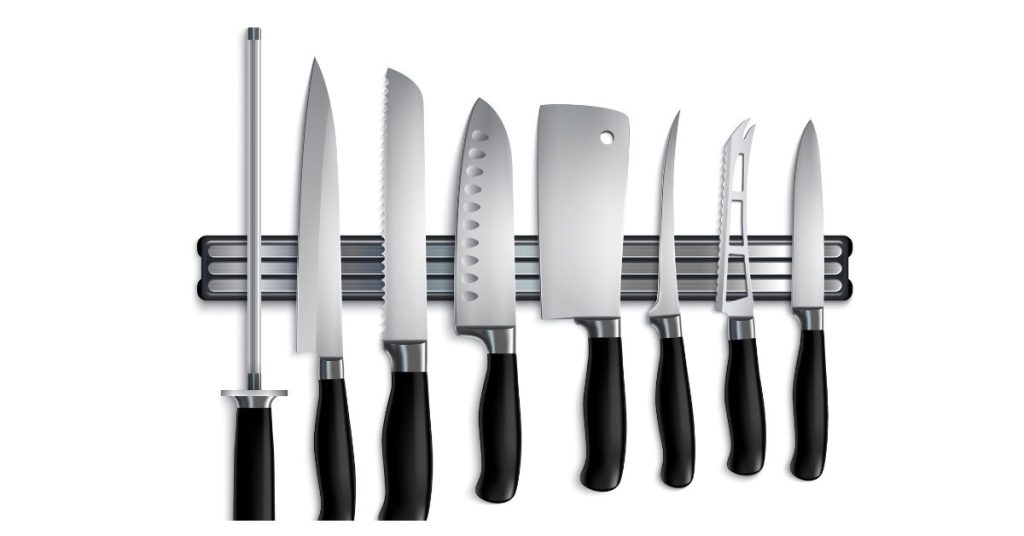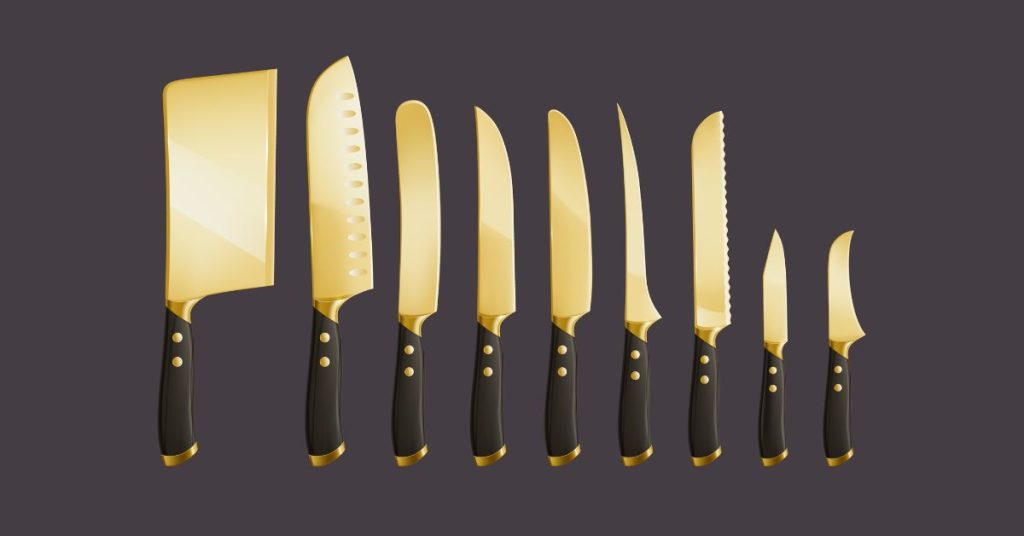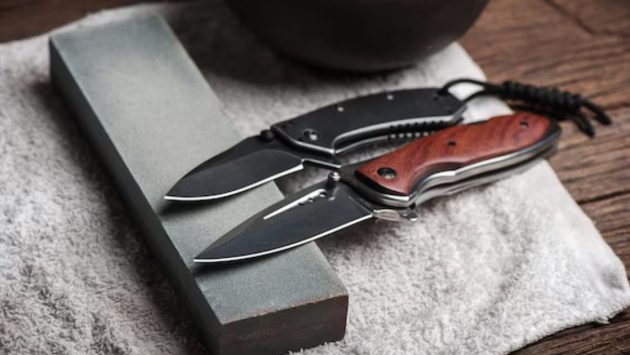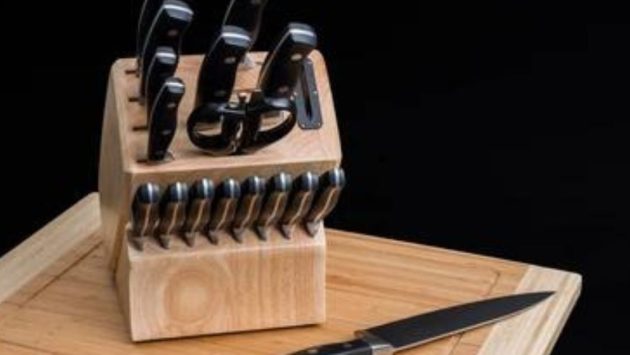Top Tips For Purchasing the Best Kitchen Knife of 2023
Table of Contents
ToggleIntroduction:
Selecting the right kitchen knife is a difficult task to enhance your culinary skills. The perfect knife helps to make chopping, slicing, and dicing a breeze, but you when choose the wrong knife, it creates many problems in all tasks and you get bad results. But don’t worry; in this blog, we will help you navigate the world of kitchen knives and find the one that perfectly suits your needs. In this comprehensive guide, we will explore the types, materials, and maintenance to ensure you make an informed decision about what kitchen knife you should buy.
Why Choosing the Right Kitchen Knife Matters
Kitchen knives play a vital role in culinary adventure When it comes to cooking, efficiency and precision are frequently essential to producing delicious meals. The importance of selecting a kitchen knife to improve your cooking experience cannot be emphasized enough. Because it has a big impact on your food quality and overall kitchen experience.
Here are a few compelling reasons why choosing the right kitchen knife matters:
- Enhanced Cooking Performance: The right kitchen knife is an extension of your hand, allowing you to perform precise cuts with ease. Whether you’re slicing vegetables, or cutting meat, the proper knife can make these tasks not only efficient but also enjoyable.
- Time and Effort Savings: A well-suited kitchen knife can significantly reduce the time and effort required for meal preparation. You’ll do your tasks easily, saving valuable minutes in the kitchen.
- Consistency and Presentation: Consistency in the size and shape of ingredients is essential in cooking. A good knife helps you achieve this, resulting in evenly cooked dishes and beautifully presented meals.
- Long-Term Investment: Purchasing a high-quality kitchen knife is a budgetary responsibility. If we compare new knives with old and less sturdy knives, then a well-maintained high-quality knife may save you money for many years.
Types of Kitchen Knives

Choosing the right kitchen knife is a crucial job in the field of culinary arts. Every knife has good quality in its field and performs a good job. The most popular kinds of kitchen knives and their applications are summarized here.
Chef’s Knife: The chef’s knife, with its broad, slightly curved blade, is a purposeful, multipurpose knife that is considered a workhorse of the kitchen. It works perfectly for chopping, slicing, and mincing a variety of foods, including vegetables and meat.
- Paring Knife: Paring knives are smaller with a pointed, narrow blade. They’re perfect for precision tasks like peeling, trimming, creating intricate cuts, etc.
- Santoku Knife: The Santoku knife, which originates from Japan, is quite different from its shorter, wider blade and scalloped edge. it has good qualities for slicing, chopping, and dicing in all-around knives for Asian and Western cuisines.
- Bread Knife: The bread knife, with its serrated blade, is designed for cutting bread and other baked goods without crushing them. It’s also handy for slicing delicate, soft-skinned fruits like tomatoes.
- Utility Knife: The utility knife falls between a chef’s knife and a paring knife in terms of size. It’s suitable for various cutting tasks, from slicing sandwiches to trimming small vegetables.
- Steak Knife: Typically part of a steak knife set, these knives have sharp, serrated blades for effortlessly cutting through steak and other meats at the dining table.
- Boning Knife: Featuring a thin, flexible blade, the boning knife is designed for removing bones from meat, poultry, and fish. Its precision is essential for intricate cuts.
Choosing the Right Kitchen Knife for Your Needs
Selecting a cooking chabitshen knife is a highly personal decision that hinges on your cooking style, preferences, and requirements. Here’s an informative guide that will help you make good decisions.
Assess your cooking habits:
- Take a moment to reflect on your typical cooking routine. Do you enjoy preparing elaborate, multi-course meals, or do you tend to focus on quick and straightforward recipes? Understanding your cooking habits will guide your knife selection.
Identify common tasks:
- Make a list of the most common cutting tasks you perform in the kitchen. Do you frequently chop vegetables, slice meats, or prepare delicate herbs? Knowing your primary cutting needs is crucial.
Consider knife types:
- Match your cooking tasks with the appropriate knife types. For versatile all-around cutting, a chef’s knife may be your go-to choice. If you often work with small ingredients, a paring knife may be essential.
Choose blade length:
- The blade length should align with the size of the ingredients you commonly handle. Longer blades are suitable for larger tasks, while shorter ones offer more precision.
Budget Considerations:
- Determine your budget for kitchen knives. High-quality knives can be an investment, but there are cost-effective options available. Balance your budget with your desired quality.
Popular Kitchen Knife Brands and Models

Many reputable brands offer notable and popular knife collections that nobody can ignore. These brands have earned their reputation and money for their qualities and performances. Here are some popular brands and their knife models:
Wusthof:
- This classic chef’s knife is renowned for its accuracy, steadiness, and adaptability.
- A top choice for intricate tasks, this paring knife is a staple in many kitchens.
Victorinox:
- This budget-friendly chef’s knife is celebrated for its sharpness and durability.
- Perfect for slicing sandwiches and bread with ease
3. Zwilling J.A. Henckels:
- For its balanced design and quality steel, this chef’s knife is a favourite among professionals.
- Ideal for precision work, this paring knife features a comfortable handle.
Shun:
- This chef knife has an outstanding type of sharp blade, and its design is also useful.
- This Japanese-style knife has good qualities in slicing and dicing.
Global:
- Many chefs prefer this chef knife because of its qualities, good design, and superb balance.
- This paring knife is praised for its razor-sharp edge and versatility.
Miyabi:
- Part of their artisanal Kaizen series, this knife is prized for its beauty and performance.
- The knife handle is made with beautiful artwork, and its functions are also good.
Conclusion:
Selecting the right kitchen knife is an important step towards improving your cooking experience and culinary abilities. It is not just a tool but rather a reliable traveling companion in the kitchen. We have explained every topic in this blog that must be informative before selecting the correct knife, as well as types of kitchen knives, handle options, materials of the blade, and maintenance factors. We’ve also discussed the key buying factors to consider and highlighted some popular knife brands and models.Therefore, before making your final choice, take your time, consider your options, and do not be afraid to try out different knives. Having the correct kitchen knife will improve your cooking abilities and encourage you to try new foods and flavours. Happy kitchen!
FAQ's
Which kitchen knife is more useful to purchase?
A chef’s knife is more useful to purchase because it is best for a practical kitchen. chef’s knife has many benefits, e.g., chopping, mincing, and slicing. Due to its best qualities,it is an important tool for the home kitchen.
2: What are the advantages of carbon steel and stainless steel?
The advantages of carbon steel and stainless steel are different, but both are important tools for the kitchen. Stainless steel has the ability to be low maintenance and is resistant to corrosion. while a carbon steel knife is highly valued for being sharp and simple to sharpen.
3: Which method is best to maintain the sharpness of kitchen knives?
If you want to maintain the sharpness of your kitchen knife, regularly use a honing rod or sharpening stone to realign the blade. When the blade becomes dull, invest in professional sharpening or learn how to sharpen it yourself. Proper storage, hand washing, and avoiding hard-cutting surfaces also contribute to knife sharpness.
4: What’s the difference between German and Japanese kitchen knives?
German and Japanese kitchen knives have distinct characteristics. German knives, such as those by Wusthof and Henckels, are known for their durability and versatility. Japanese knives, like those by Shun and Miyabi, often have thinner, sharper blades suited for precise cuts.
5: Are expensive kitchen knives worth the investment?
If you are a serious cook, then investing in expensive equipment may be worthwhile. Better knives typically last longer, are sharper for longer periods, and provide better control. For casual home cooks, there are affordable options that deliver good performance.
6:How can I determine the ideal knife size for my needs?
The ideal knife size depends on your typical cutting tasks and personal comfort. Generally, an 8-inch chef’s knife is considered the best choice for most home cooks, while professional chefs prefer a knife that size and must have a 10-inch knife for larger tasks. Consider your typical ingredients and cooking style when choosing the size.
7: Should I buy a knife set or individual knives?
Whether to purchase a knife set or individual knives depends on your specific needs. Knife sets can offer a cost-effective way to acquire a variety of knives, but it’s important to ensure all the included knives will be useful for your cooking habits. Consider your budget, cooking style, and the quality of knives in the set before making a decision.




